Microsoft SQL Server has many important features when it comes to file structures. Generally speaking, DBAs often ignore file structures and growth configurations. More specifically, the SQL Server Log files are often left at default values and never touched, even when they begin to cause problems caused. These Log files are important and critical part of the database, especially when it comes to large systems.
Read more »Features

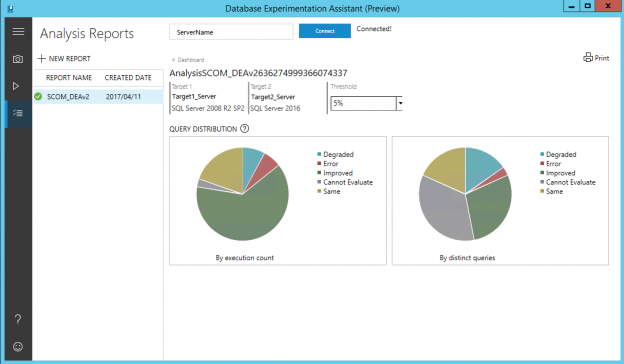
How to download and install the SQL Server Database Experimentation Assistant (DEA v2.0)
April 19, 2017Introduction
I had the opportunity to work and perform various tests with Database Experimentation Assistant (DEA) Technical Preview 1 (DEA v1) and also worked closely to DEA’s development team by reporting some issues and have their feedback on how to solve most of them. Some issues were really bugs and they had them fixed in this new release, the DEA Technical Preview 2 (DEA v2.0).
Read more »
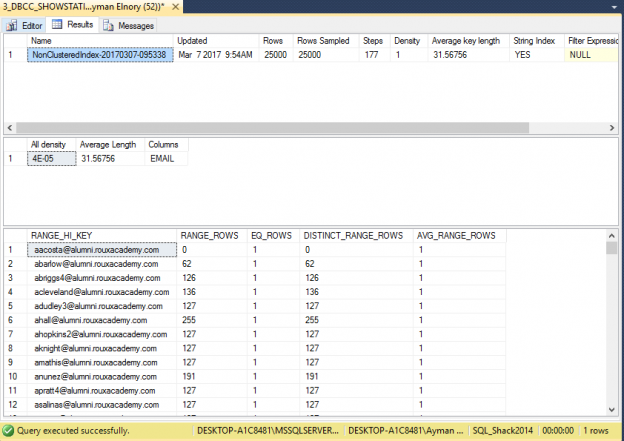
Concept and basics of DBCC Commands in SQL Server
March 31, 2017Many DBA’s and database developers aren’t very familiar with DBCC commands (aka Database Console Commands) because they don’t always have the chance to work with them. In this article, we’ll provide a simple primer on DBCC commands with specific examples
Read more »
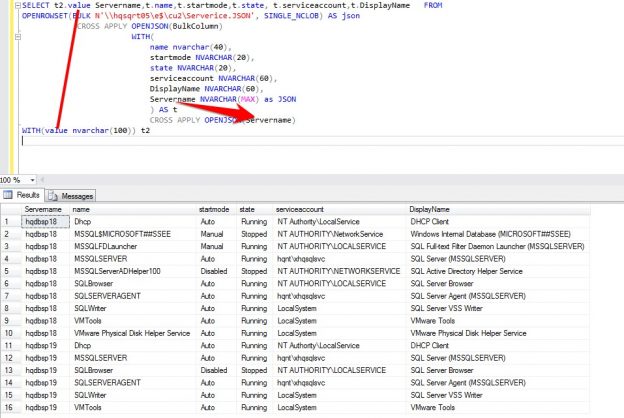
Illustration of an example availability monitoring service Using PowerShell and SQL
March 23, 2017This article discusses a simple solution of how to monitor SQL service availability across multiple servers and reporting. To build this I’ll use SQL Server with simple PowerShell script and cmdlets which generate JSON data and displays results in HTML
Read more »
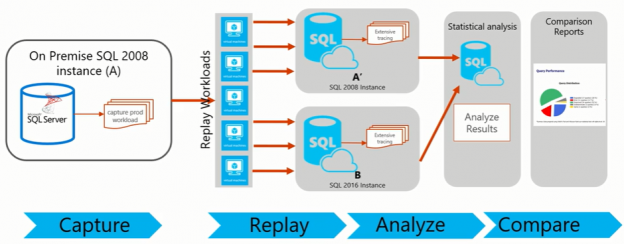
How to use the SQL Server Database Experimentation Assistant (DEA) tool
February 24, 2017Introduction
This is my second article about Database Experimentation Assistant (DEA). Please refer to my previous article to see how to download and install DEA.
The Database Experimentation Assistant is the new A/B testing solution for SQL Server upgrades. It enables customers to gather performance insights for upgrades by customers to conduct experiments on production database workloads across two versions of SQL Server.
Read more »

How to Import / Export CSV Files with R in SQL Server 2016
February 9, 2017Introduction
Importing and exporting CSV files is a common task to DBAs from time to time.
Read more »

How to download and install the SQL Server Database Experimentation Assistant (DEA)
January 12, 2017Introduction
The Database Experimentation Assistant (DEA) is a new Experimental solution provided by Microsoft used to help upgrading databases from older SQL Server versions (MSSQL 2005 or higher versions) to the more recent ones (MSSQL 2012 or higher versions). It accomplished this based in a given workload that is previously captured from the source database and later replayed on the target SQL Server instances for comparison.
Read more »
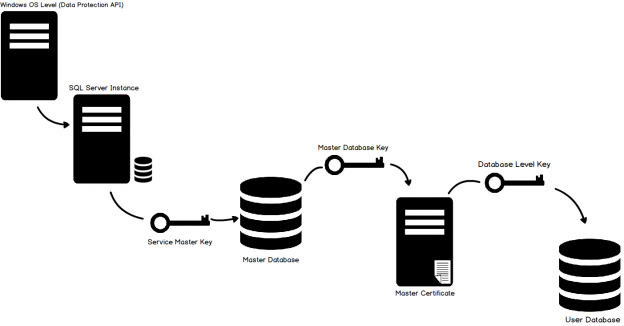
How to configure Transparent Data Encryption (TDE) in SQL Server
December 19, 2016Introduction and Overview
Transparent Data Encryption (TDE) was introduced in SQL Server 2008. Its main purpose was to protect data by encrypting the physical files, both the data (mdf) and log (ldf) files (as opposed to the actual data stored within the database). Transparent Data Encryption Encrypts SQL Server, Azure SQL Databases, and Azure SQL Data Warehouse data files.
Read more »
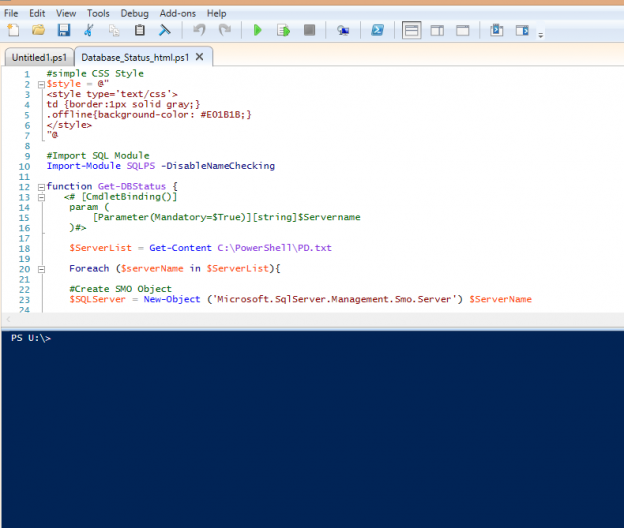
PowerShell: Get a daily database status email
November 22, 2016The need for this script came about when I took a new job as a DBA. One of my responsibilities was to make sure all databases were available after the maintenance window which ran during the weekend. Rather than log into each database server and check that the databases were online, I had a script do the work for me and shoot me an email.
Read more »
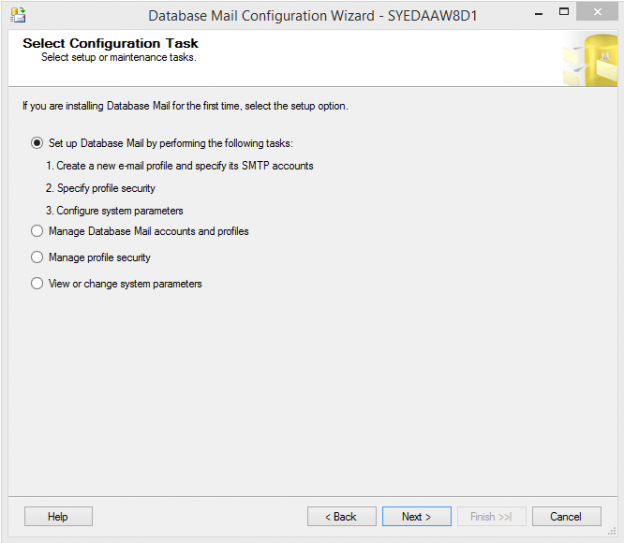
Have your database server talk to you: Send emails directly from SQL Agent Jobs
November 7, 2016Recently, I was asked if I can write and run a specific query and have the results, (if any) emailed to a specific group of people every day? But only send the email if the query returns results. Who wants to open and empty email after all?
As with any DBA, we need a way to automate this process, as our time is valuable. Who wants to manually run a script, paste it into excel and then email it directly to users every morning?
Read more »
Force query execution plan using SQL Server 2016 Query store
July 29, 2016SQL Server Query Store is a new feature introduced in SQL Server 2016 that is used to automatically and asynchronously capture query execution history, statistics and plans, with minimal impact to overall SQL Server Performance. The Query Store feature makes performance problem troubleshooting simple; you can view the query execution plans changes and compare its performance to decide which execution plan the SQL Server Query Optimizer should use for that query.
Read more »
Geo-replication in Azure SQL Database
July 14, 2016Introduction
If you have an Azure SQL Database, it is possible to replicate the data in multiple locations. In this new chapter, we will explain how to do it. This article has 3 sections:
Read more »
Format DBMail with HTML and CSS
June 23, 2016Background
In my organization, the developers send a lot of database generated emails for informational purposes to ensure that everything in the system is still working 100%.We can call them production messages. Normally the way the email is presented is not important as it is only meant for the developer to help with system health check, but every now and again a business user would ask for the report (which was never meant to be an actual report) and then we would include the business user in the distribution list for this email.
Read more »
Useful DBCC log commands
June 1, 2016Background
When we’re architecting or troubleshooting issues in an environment, understanding how the log is set up and its history helps us identify if improving it will carry significant impacts overall. We have some built in tools that we can use, such as DBCC LOGINFO and DBCC SQLPERF and in this tip we look at how we can use them when we’re debugging issues, designing our logs for scale, or monitoring our current setup. We also look at some ways we can retain the information these provide so that we can use this for historic measurements and benchmarking, as well as using them for potentially alerting.
Read more »
Some replication architecture errors and their resolutions
May 16, 2016Background
From time to time, I’ve run into replication issues in inherited environments that I did not architect and some of these environments experienced errors in replication because of how it was constructed from the beginning. In this tip, we look at some of the basics in replication architecture and then at solving some of these problems. Some of the replication issues I’ve seen are caused by misunderstanding what is impossible and possible with replication.
Read more »
Managing SQL Server transaction logs
May 13, 2016SQL Server databases consist of two physical files types; the data file in which the data and the database objects such as tables and indexes are stored, and the transaction log file in which SQL Server stores records for all transactions performed on that database.
Read more »
How to take advantage of the SQL Server’s transaction log?
April 11, 2016Introduction
SQL Server keeps track of all database modifications and every database transaction. This is done in a file called the transaction log or TLOG. This transaction log is particular to a SQL Server database and there is, at least, one transaction log per SQL Server database.
As explained on MSDN, the transaction log is a critical component of the database and, if there is a system failure, the transaction log might be required to bring your database back to a consistent state. The transaction log should never be deleted or moved unless you fully understand the ramifications of doing this.
Read more »
How to configure SQL Server mirroring on a TDE encrypted database
February 19, 2016Securing and encrypting sensitive data stored in your production databases is a big concern, especially the databases storing the organization’s financial data and customers’ confidential information.
SQL Server offers multiple encryption methods in the cell, table and database levels. And in this article, we are interested in a SQL Server database encryption method, introduced in SQL Server 2008, called Transparent Data Encryption (TDE). SQL Server TDE provides encryption on the database file level; it encrypts the database (.MDF), (.LDF), (.NDF), (.BAK), (.DIF), (.TRN) and snapshot files.
The main purpose of this article is showing how we could setup a mirroring site for a database encrypted using SQL Server Transparent Data Encryption. But before starting the demonstration, it is better to introduce TDE first.
Read more »
Peer to peer replication
February 18, 2016Nowadays many customers are spread globally and need to manage the requirement for users to connect from/to any location, perform an activity (insert, update, delete), and the databases should be kept synchronized across multiple sites.
Read more »
Understanding the distribution scale of transactional and snapshot replication
January 25, 2016Background
If an environment chooses to use snapshot or transactional replication, one useful exercise is to ask the technical end user (or client) what they think replication does. If you have access to a white board, you can even ask them to demonstrate what they think replication will do for their data. Generally, these technical end users will plot something similar to the below image, where we see a table with data being copied to another table with data.
Read more »
SQL Server Transactional Replication Moving Distribution Database – step-by-step guide
November 27, 2015SQL Server replication is a relatively old high-availability solution part of the Microsoft world. In fact, there have not been any significant changes to this solution in the recent versions SQL versions, but it is still a widespread mechanism for distributing objects from one database to another and synchronize them. Replication is very useful when you have remote and mobile users accessing your data. Let’s cut to the chase and give you more details about our specific case. 🙂
Read more »
The SQL Server Query Store in Action
November 26, 2015Introduction
The Query Store is a new feature in SQL Server 2016 that will greatly improve the process of performance tuning! The biggest limit of the query plan cache and the dynamic management views that relates to it is that it is very temporary. Queries are only accessible for as long as they are in cache, and as a result there is no way to travel back in time to determine what happened at 9am yesterday, or why performance worsened over a week-long period.
Read more »
Query Store – the next generation tool for every DBA
November 13, 2015Along with the release of SQL server 2016 CTP 3 now comes the preview of a brand new feature for on premise databases – the Query Store. This feature enables performance monitoring and troubleshooting through the log of executed queries.
This blogpost will cover the following aspects of the Query Store feature:
- Introduction
- How to activate it
- Configuration options
- What information is found in the Query Store
- How to use the feature
- What’s in it for me

SQL Server Transaction Log – Part 3 – Configuration Best Practices
May 4, 2015It has been a while since the last transaction log article has been published, so I hope you do remember where this series is heading to. In the former posts, we have examined the Log Structure and Write-Ahead Algorithm (part 1) and the Top Reasons for Log Performance Problems (part 2). Taking into consideration this knowledge, we will review some best-practices for transaction log configuration in order to decrease the chance of experiencing log bottlenecks.
Read more »
How to create SQL Server Log Shipping
March 10, 2015In my last article, I show how to create Database Mirroring for high availability. This time, I will work on Log Shipping.
The Log Shipping as the name says ships the Transactional Log from the Primary Servers to the Secondary Servers.
Read more »